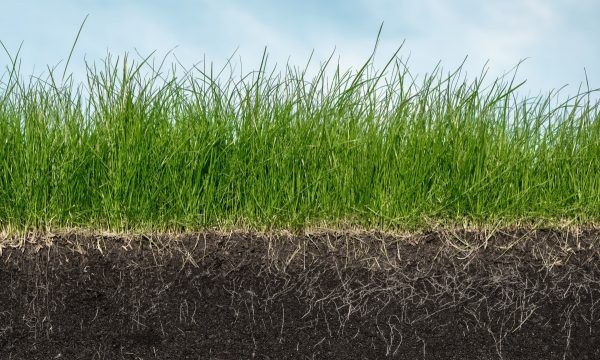Project news Field beans in dairy cattle farming: toasting (for) success?
Field beans are an interesting alternative for imported soy in dairy production, but only if the beans are first heated. Those are the results from the ILVO-study within the EKOPTI project. Heating is required for good digestion and also helps in storage.

Veldbonen (Vicia faba) zijn een interessant alternatief voor geïmporteerde soja in de melkveehouderij. Ze groeien goed in ons klimaat en vragen een vrij eenvoudig management. De soort behoort bovendien tot de vlinderbloemigen, die stikstof uit de lucht kunnen halen, waardoor bemesting met stikstof niet of slechts beperkt nodig is. Dit heeft positieve gevolgen voor de biodiversiteit, drukt de kosten voor kunstmest en maakt de teelt zeer geschikt voor biologische bedrijven. Maar hoe zit het met de voederwaarde? ILVO zocht het uit in het kader van project EKOPTI.
De voederwaarde van veldbonen, met veel eiwit en zetmeel, sluit goed aan bij de specifieke en hoge rantsoenvereisten voor melkvee. Maar er zijn er ook een aantal negatieve punten: het eiwit in rauwe veldbonen is voor 75 – 80 % afbreekbaar in de pens, terwijl het eiwit van sojaschroot maar voor 55 – 60 % wordt afgebroken. Ook het zetmeel in veldbonen is in sterke mate, 76 tot 78 %, afbreekbaar in de pens. De hoge afbreekbaarheid van zowel eiwit als zetmeel in de pens resulteert in een relatief lage darm beschikbaarheid en vermindert de benutting door het dier. Daarnaast bevatten rauwe veldbonen anti-nutritionele factoren (ANF’s), die nadelig zijn voor het verteringsproces en de dierprestaties. Men kan veldbonen echter geschikter maken als eiwitbron voor melkvee door ze te toasten. Verhitting maakt zowel het eiwit als het zetmeel bestendiger tegen afbraak in de pens. Verder neutraliseert toasten een groot deel van de anti-nutritionele factoren, zodat het negatief effect op de verteerbaarheid sterk wordt gereduceerd. Bovendien zorgt toasten ervoor dat het vochtgehalte afneemt met 3 à 5 %, waardoor de bonen beter bewaren. Te lang of bij een te hoge temperatuur toasten kan de aminozuren echter minder opneembaar maken. Correct toasten is dus belangrijk! Dat gebeurt best tot een kerntemperatuur van 130 graden, en na het breken en opschonen van de bonen.
Getoaste veldbonen blijken een deel van de soja in het rantsoen te kunnen vervangen (tot 1,7kg per koe per dag), zonder grote impact op de melkproductie. Naast de ecologische voordelen, situeert de winst voor het bedrijf zich voornamelijk in een lagere voederkost. De mate waarin veldbonen goedkoper en dus interessanter zijn dan soja hangt uiteraard af van de sojaprijs.
Field beans (Vicia faba) are an interesting alternative to imported soy in dairy farming. They grow well in our climate and require fairly simple management. Moreover, the species belongs to the leguminous plants, which can take nitrogen from the air, so that fertilization with nitrogen is hardly necessary or not at all. This has positive effects on biodiversity, reduces fertilizer costs and makes the crop very suitable for organic farms. But what about the feed value? ILVO looked into it within the framework of the EKOPTI project.
The feed value of field beans, with a lot of protein and starch, fits in well with the specific and high ration requirements for dairy cattle. But there are also some negative points: the protein in raw field beans is 75 - 80% degradable in the rumen, while the protein of soybean meal is only 55 - 60% rumen-degradable. The starch in field beans is also highly rumen-degradable, 76 - 78%. The high degradability of both protein and starch in the rumen results in relatively low intestinal availability and reduces utilization by the animal. In addition, raw field beans contain anti-nutritional factors (ANFs), which are detrimental to the digestive process and animal performance. However, toasting the field beans makes them more suitable as a protein source for dairy cattle. Heating makes both the protein and the starch more resistant to degradation in the rumen. Furthermore, toasting neutralizes many of the anti-nutritional factors, greatly reducing the negative effect on digestibility. In addition, toasting reduces the moisture content by 3 to 5%, so that the beans store better. However, toasting for too long or at too high a temperature can make the amino acids less absorbable. Correct toasting is therefore important! This is best done up to a core temperature of 130 degrees, and after breaking and cleaning the beans.
Toasted field beans appear to be able to replace part of the soy in the ration (up to 1.7 kg per cow per day), without a major impact on milk production. Besides the ecological benefits, the profit for the farm is mainly in a lower feed cost. The extent to which field beans are cheaper and therefore more interesting than soya depends of course on the soya price.


